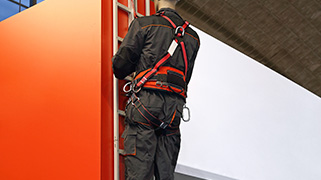Work in confined spaces presents unique challenges. Learn what to document, how, and where a confined space plan is required.
What is a confined space
There are three conditions that create a confined space. None of the definitions refer to the physical size of the space. Confined space doesn’t always mean small or in close quarters.
The first condition is that it is not designed for continuous human occupancy. This is a broad definition and can encompass everything from an open vat or pool to a pipe or tunnel.
The second condition is that the space may present an atmospheric hazard. Doesn’t necessarily present a hazard, but might. An atmospheric hazard is one that creates an oxygen deficient (or enriched) atmosphere, or a toxic atmosphere because of other contaminants. This hazard can be internal or external such as a cutting or welding operation or the introduction of gases or vapours from an outside source such as engine exhaust or leaking fuel.
The third condition is that there needs to be limited means of egress. This may be due to the size of the vessel or compartment, the shape of the doorway, the need for a ladder or other means of access.
What goes into an entry plan
Any confined space entry needs a specific plan written for that event. In many cases, the details of a plan can be repeated for each space and adjusted for specific tasks that are being completed during the entry. It is best practice for industrial facilities to have an inventory of confined spaces and the requirements for each one pre-filled in the plan.
Basic information includes the type of space, the hazards that are or may be present in the space, the tasks to be completed in the space, and the rescue plan should an emergency arise. The details of the plan are based on the specific conditions encountered at the time of entry. The plan also sets out the workers, attendants, and supervisors involved in the activity.
What information do we need
The first thing needed is a description of the space and an assessment of the hazards associated with entry. These hazards need to be addressed before adding any other potential hazards of the tasks to be performed in the space. Once the hazards are identified, controls must be put in place. Depending on the nature of the space and tasks, there may need to multiple or back up controls. If multiple trades are involved in the process, a coordinating document is required to ensure that one trade’s operations won’t create a hazard for other workers in the space.

What’s next?
Every employer needs a confined space program if their workers are exposed to confined space work. Developing a plan and training workers is a critical step in worker safety. Contact us today to review or update your confined space plan, or develop training for your specific needs. Remote training is available here:
KMC Safety Solutions serves the Southern Ontario manufacturing and construction sectors. We offer training, program development, gap analysis, compliance auditing and consulting services. Training is available in person or online for many programs. Contact KMC for your personalized solutions.
